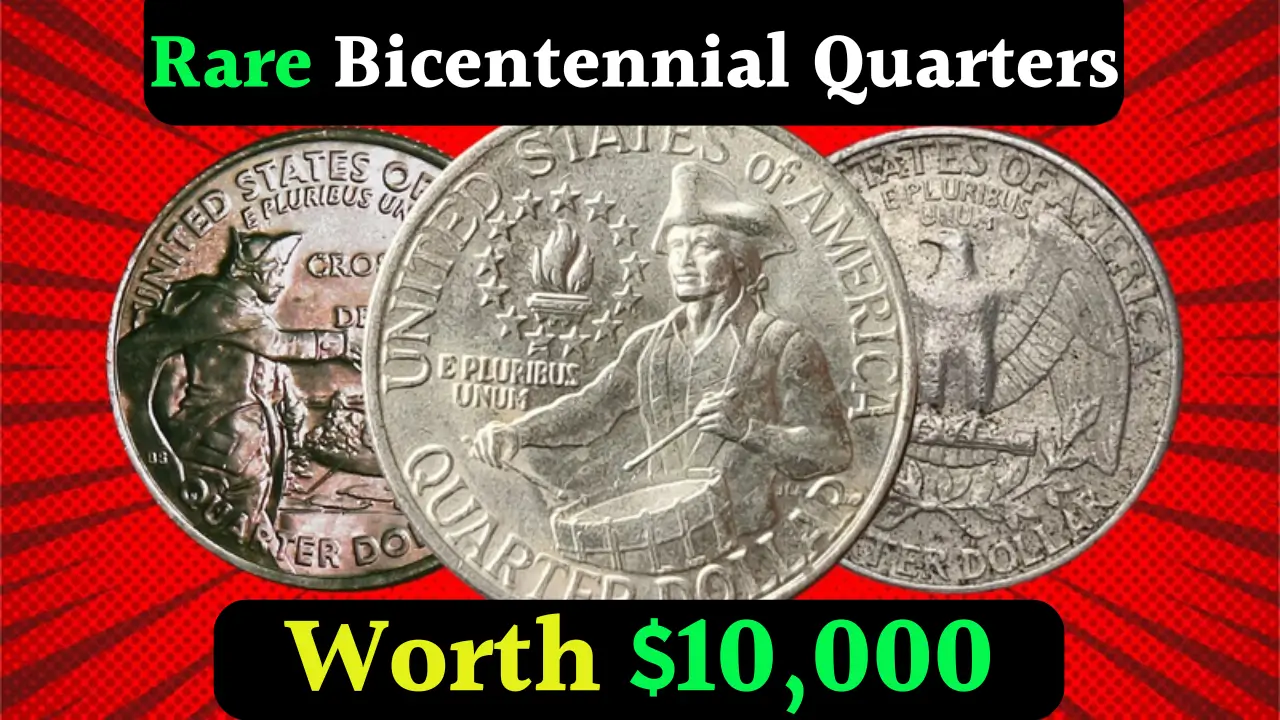The rare Bicentennial quarters from the United States have become one of the most fascinating topics in the world of coin collecting. Created to celebrate America’s 200th birthday in 1976, these coins hold immense historical and monetary value today. While millions were minted and circulated, only a handful of specific versions are considered rare and can be worth tens of thousands of dollars.
But what makes these coins so valuable, and how can you know if you own one? Let’s explore this in detail.
The History Behind the Bicentennial Quarters
In 1976, the U.S. Mint released special quarters, half dollars, and dollar coins to celebrate the 200th anniversary of American independence. These coins were unique because instead of featuring the typical dates of issue, they were inscribed with “1776–1976.”
The Bicentennial quarter was designed by Jack L. Ahr. Instead of the usual eagle on the reverse side, the coin displayed an image of a colonial drummer surrounded by a torch of victory with 13 stars representing the original colonies. This distinctive design became highly recognizable and a favorite among collectors.
The U.S. Mint produced Bicentennial quarters at three locations: Philadelphia, Denver, and San Francisco. Regular clad versions were released into circulation, while proof and special silver collector editions were made for investors and coin enthusiasts.
Why Are Some Bicentennial Quarters Worth $10,000?
Although more than 1.6 billion Bicentennial quarters were minted, the majority are still worth only face value or slightly more. So why are a few pieces valued at over $10,000? The high value comes down to several key factors:
- Minting Errors: Coins with striking mistakes, doubled dies, or misaligned prints can fetch thousands of dollars.
- Precious Metal Content: Some Bicentennial quarters were struck in 40% silver, making them more valuable than clad versions.
- Proof and Uncirculated Quality: Quarters struck for collectors in pristine condition with no wear are worth significantly more.
- Rarity of Type: Coins with unique mintmarks, few surviving specimens, or special editions fetch higher prices.
Types of Bicentennial Quarters
| Type of Quarter | Mint Location | Metal Composition | Value Range Today | Rarity Level |
|---|---|---|---|---|
| Circulated Clad Coins | Philadelphia & Denver | Copper-Nickel | $0.25 – $1 | Common |
| Uncirculated Clad | Mint Sets | Copper-Nickel | $1 – $20 | Uncommon |
| Proof Bicentennial Quarters | San Francisco | Copper-Nickel | $5 – $30 | Collectible |
| 40% Silver Bicentennial Coin | San Francisco | Silver-Clad | $10 – $5000+ | Rare |
| Error Bicentennial Quarters | Various Mints | Copper-Nickel / Silver | $100 – $10,000+ | Very Rare |
Identifying a Rare Bicentennial Quarter
To know whether you have one of these valuable quarters, pay attention to the following details:
- Check the Mintmark: Found near Washington’s hair ribbon. Coins with “S” (San Francisco) mintmark may indicate silver or proof issues.
- Look for Silver Shine: Silver quarters appear brighter and weigh more (around 5.75 grams vs. 5.67 grams for clad).
- Inspect for Errors: Misprints, off-center strikes, and doubling errors make coins rare.
- Evaluate Condition: Uncirculated or proof coins with mirror-like surfaces hold far higher values.
Even a circulated silver coin is more valuable than the standard clad variety.
The Market Value of Bicentennial Quarters Today
Coin values in the U.S. market depend largely on collector demand and rarity. While an average Bicentennial quarter is worth just face value, rare silver or error-struck pieces can sell for thousands at coin auctions.
- Average Circulated: 25 cents – $1
- Uncirculated Sets: $1 – $20
- Proof Silver Quarters: $10 – $50+
- Verified Error Coins: $500 – $10,000
Some highly rare examples have indeed reached past $10,000 due to demand from serious numismatists.
Bicentennial Quarter Collecting Tips
For anyone interested in collecting these historical quarters, a few smart strategies can make the process rewarding:
- Preserve coins safely in protective holders to avoid scratches.
- If you find a potential silver or error coin, have it graded by a professional coin grading service.
- Focus not just on value, but on building a complete Bicentennial collection that includes circulated, uncirculated, and proof versions.
Why Americans Love the Bicentennial Quarter
Beyond monetary value, the Bicentennial quarter stands as a piece of history. It symbolizes American independence, unity, and pride. Millions of Americans collected these coins during the 1970s and continue to pass them down through generations.
The colonial drummer, the patriotic symbolism, and the dual date “1776–1976” make it a timeless reminder of the nation’s heritage. Whether worth thousands or just 25 cents, every Bicentennial quarter carries historical charm.
FAQs
1. How many Bicentennial quarters were made?
Over 1.6 billion Bicentennial quarters were minted in 1975–1976.
2. What makes a Bicentennial quarter rare?
Error coins, silver issues, and uncirculated proof versions are considered rare and valuable.
3. How can I tell if my Bicentennial quarter is silver?
Silver versions weigh slightly more and have an “S” mintmark, often from proof sets.
4. Are Bicentennial quarters still legal tender?
Yes, they remain legal U.S. currency worth 25 cents, but collectors often pay much more.
5. What is the highest price ever paid for a Bicentennial quarter?
Some rare error or silver-struck coins have sold for more than $10,000 at auction.
Conclusion
The rare Bicentennial quarters worth $10,000 are not simply coins; they are symbols of American heritage with exceptional collector appeal. While the vast majority remain only face value, select silver, proof, and error versions can turn out to be treasures hiding in your pocket change or coin jar. If you come across one, it’s worth a second look—they just might be worth thousands.






